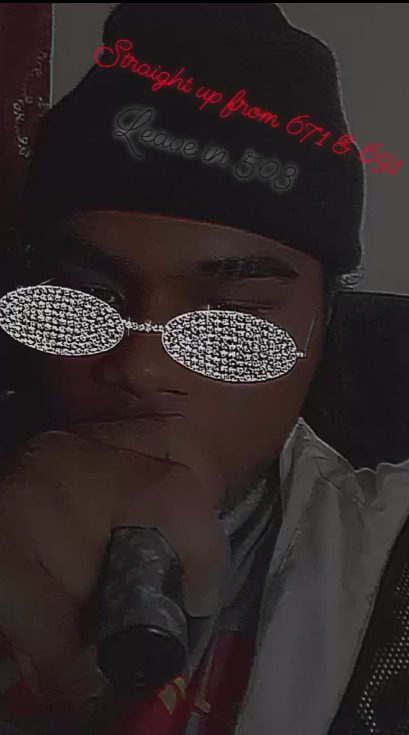#Micronesian
Explore tagged Tumblr posts
Text


Descendants of the First Seafarers
Some of the ancestors of the native peoples of Madagascar, Malaysia, Indonesia, and the Pacific Islands (Micronesia, Melanesia, Polynesia) came from an ancient seaborne migration out of Taiwan and the Philippines (2200 BCE - 1250 CE). Cultural traditions still shared among these far-flung peoples today include tātau (tattoos), jade carving, stilt houses, and the cultivation of taro, pork, rice, coconuts, and yams.
#austronesian#pinoy#polynesian#melanesian#micronesian#aanhpi#maori#rapa nui#malagasy#oil on wood#tatau#pacific islander#size chart#gay art
21 notes
·
View notes
Text
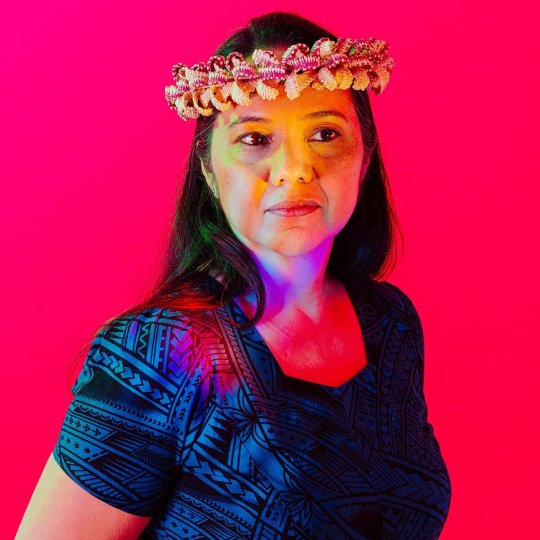
3 notes
·
View notes
Text
watch Sosefina at manuscriptfilms.com
#sosefina #polynesian #fypviral #fyppp #italy #nauru #southkorea #india #palau #indonesia #namibia #poland #cookislands #canada #japan #newcaldonia #vanuatu #northernlands #unitedkingdom #guam #micronesia #solomonislands #marshallisland
#sosefinamovie#pacificislander#pasifika#culture#polynesian#explorepage#dance#fijian#hollywood#faarapu#micronesian#poland#indonesia#sweden#jordan#iraq#newyork#washington#florida#oregon#brazil#germany#montana#thailand#guam#philippines#hawaii#alaska#canada#united kingdom
3 notes
·
View notes
Text
Vocabulary in the some languages of Austronesian (Formosan, Malayo-Polynesian).
#languages#culture#vocabulary#austronesian#formosan#malay languages#tagalog#visayas#mindanao#luzon#indonesian#timoris#palauan#guam#micronesian#polynesian
1 note
·
View note
Text

pohnpeian skort bc cuuultuuurrreee.
0 notes
Photo

Found this dope Maori Chief Recently 💪🏿










People From The Place where Mu/lemuria was said to be .. Notice how they said the tonga man to some people resembles the american indian.. Also in a legend there states how Lemuria had Red Soil & those who seen past post know I speak about the autochthonous which means from the soil , hence we are the red people which is another shade of brown
#lemuria#atlantis#land of mu#mu#pacific islanders#melanesian#micronesian#hawaiian#black history#world history#autochthonous#lost continent#African history#Moorish history#muurs#black history month#black history 365#tongan#pacific islander#pacific islands#maori#avatar the way of water#the way of water#Na'vi
118 notes
·
View notes
Text

November 10, 2024 - Micronesian Starling (Aplonis opaca) These starlings are found in Micronesia in forests and shrublands. Primarily foraging in trees, often in flocks of up to twelve, they mostly eat fruit and seeds, as well as insects and seabird eggs. They build nests from sticks, grass, and leaves in cavities in trees, palms, tree-ferns, cliffs, or human-made structures. Females lay clutches of one to four eggs. Both parents incubate them and care for the chicks.
62 notes
·
View notes
Note
Trick or Treat!

I have unfortunately handled very few true corvids (I see your username there) as they're often too clever to get caught, however, I have banded a ton of their relatives, like this na'abak/Micronesian Rufous Fantail! A ton of the birds from the Australasian and Indo-Pacific region are actually very early branches of the Corvoidea superfamily, such as these guys! This one was banded earlier this March on Rota, CNMI - and over my lifetime I've probably banded hundreds of them, if not thousands. They never get old because they are the CUTEST DANG CREATURE.
29 notes
·
View notes
Text
Nauru, Pleasant Island, Oceania: Nauru officially the Republic of Nauru and formerly known as Pleasant Island, is an island country and microstate in Micronesia, part of Oceania in the Central Pacific. Nauru is the third-smallest country in the world, larger than only Vatican City and Monaco, making it the smallest republic and island nation, as well the smallest member state of the Commonwealth of Nations by area. Wikipedia
103 notes
·
View notes
Photo

A new variant has been added!
Micronesian Rufous Fantail (Rhipidura versicolor) © mnaturalistss
It hatches from active, black, brown, endemic, long, new, orange, other, overall, pale, small, speckled, under, warm, white, and wide eggs.
squawkoverflow - the ultimate bird collecting game 🥚 hatch ❤️ collect 🤝 connect
8 notes
·
View notes
Text










The current Aquatic Bird House opened on September 24, 1964, on the foundation of the original house.
#Anhinga#Aquatic Bird House#opened#24 September 1964#60th anniversary#US history#Bronx Zoo#the Bronx#my favorite zoo#New York City#fauna#flora#animal#original photography#summer 2019#Storm's Stork#Sulawesi hornbill#Scarlet Ibis#Snowy Egret#Eurasian oystercatcher#Micronesian kingfisher#Laughing kookaburra#Roseate Spoonbill#Forster's Tern#indoors#tourist attraction
4 notes
·
View notes
Text
!!!ROUND!!! 1!!!! POLL!!!! 159!!!!
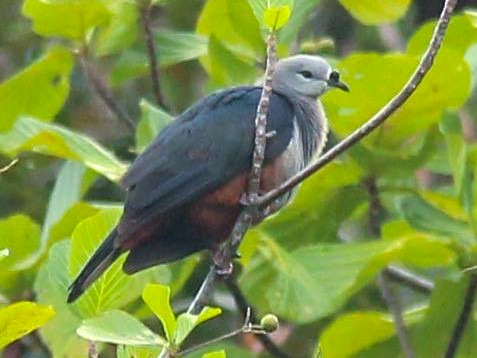
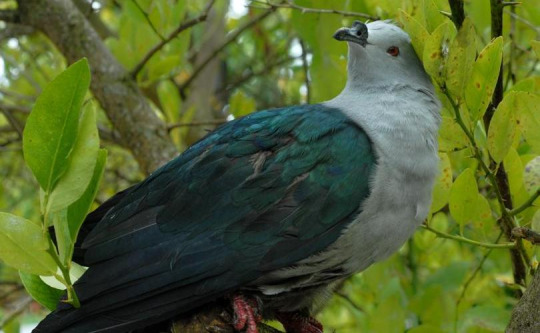
[ID: two pigeons with grey bodies, green wings and big black ceres perch in trees. the first, the Micronesian imperial pigeon has a rust-red belly and a tiny bit of white on it's face. the second is the Polynesian imperial pigeon]
honestly these guys are both like. blorbos of some kind to me. choose wisely.
Micronesian imperial pigeon!!! Polynesian imperial pigeon!!! isn't there just soo much to love??
#Micronesian imperial pigeon#Polynesian imperial pigeon#pigeons#polls#columbidae#columbidae contest#tournament poll
13 notes
·
View notes
Text
Exploring the Pohnpeian Language: A Comprehensive Guide to Pohnpeian Words and Phrases
The Intriguing Pohnpeian Language of Micronesia The Pohnpeian language, also known as Pohnpei or Ponapean, is an indigenous Micronesian language spoken primarily on the island of Pohnpei, one of the four states that make up the Federated States of Micronesia. With around 28,000 native speakers, it is the most widely spoken of the Micronesian languages. This comprehensive guide provides an…

View On WordPress
#cultural identity#indigenous languages#language interpretation services#Language Preservation#Language Services#micronesian languages#pohnpei island#pohnpeian language#Professional Interpreters#Remote Interpreting
0 notes
Text
Sometimes, Chris Hayes' podcast goes off on these weird tangents, and the most recent episode is one of them, quite explicitly. It's about the history of Polynesia, which is always a fascinating subject--the Polynesian expansion, and really the whole history of the Austronesian-speaking peoples, seems like one of those feats with rare equal in human history. It's one thing to roam over the vast steppes of Asia--it's quite another to take a canoe, stick some outriggers on it so it doesn't tip over, and start faring the open ocean.
One point his guest makes that I found interesting is that for the most part the atolls and little islands of the Pacific are a very harsh environment. Big volcanic archipelagoes like Hawaii and Aotearoa/New Zealand are rare. Atolls and other reef islands especially are functionally big limestone slabs, often without any source of fresh water, with no large mammals, and with few native plants you can eat. The weather is nice, sure (when there isn't a typhoon--and I can't help but think a typhoon on a little island must be terrifying indeed), but these are not inherently resource-rich places. That the Polynesian (and Micronesian and Melanesian!) peoples not only could travel those distances, but make permanent habitation on the islands they came across, is kind of crazy! You have to be really prepared, with a package of supplies and technologies that set you up for success. Long-distance trade is possible, but you're not gonna be running any kind of substantial import economy across hundreds or thousands of miles of ocean via catamarans.
The comparison that springs to mind to me isn't a historical one like the European age of exploration, which was overwhelmingly to places already peopled and productive, but to science fiction scenarios of space exploration. You'd have to have a little bit of the wild-eyed zealot to be the sort of person who ignores the cries of "there is no possible useful return on this investment" to settle most of these places. But they did! And they thrived for centuries!
2K notes
·
View notes
Text
Clarification: the Marshallese are indeed Pacific Islanders. However they are not Polynesian but rather Micronesian (which also includes groups like Palauans, Kiribati, Yapese, and CHamoru).
Here's a map of the different Austronesian groups and the hypothesized way they spread.

Stick charts are not only a demonstration of the skill of oceanic navigation by Pacific Islanders, but of the diversity in how those skills manifest among the different groups.
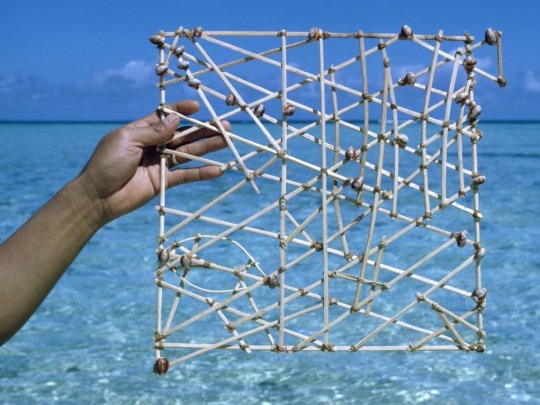
Polynesians did also rely on a form of a physical map called a stick chart, illustrating the specific wave and swell patterns surrounding different island chains. These were particularly helpful during cloudy conditions when the sun and stars were less useful. To navigate the Marshall Islands, the Marshallese represented ocean swell patterns using parts of coconut fronds and shells as islands. Like a subway map, they don’t so much represent distances as they do relationships. The complex and decorative stick charts were often only understood by the person who made them. They were memorised before a voyage by the pilot who would lie on the floor of a canoe to get a sense of swell movement and often lead a squadron of 15 or more boats.


39K notes
·
View notes
